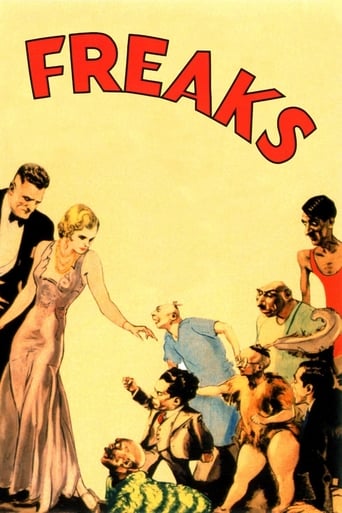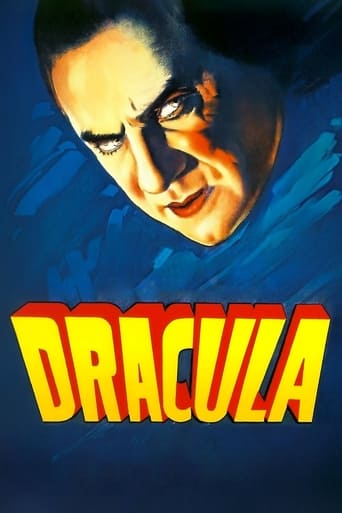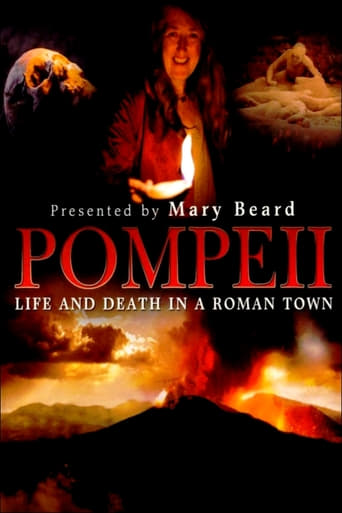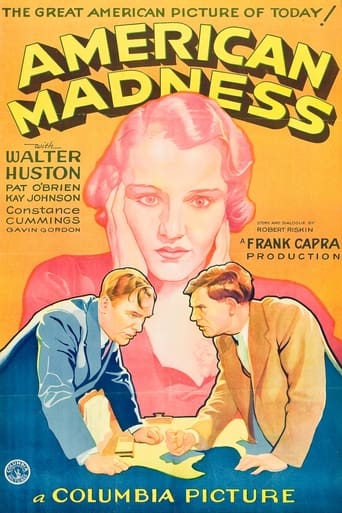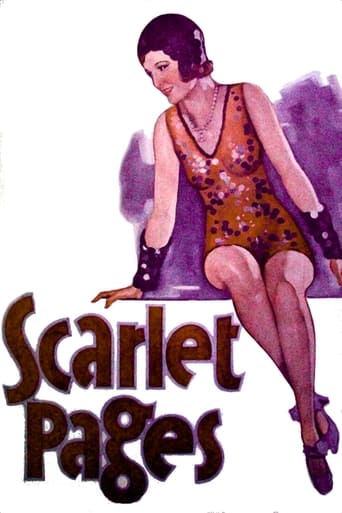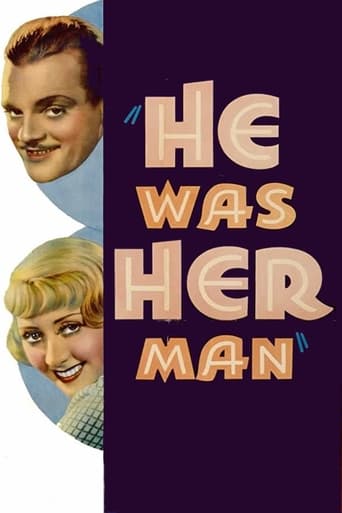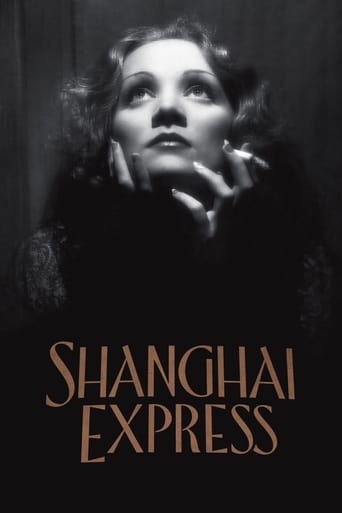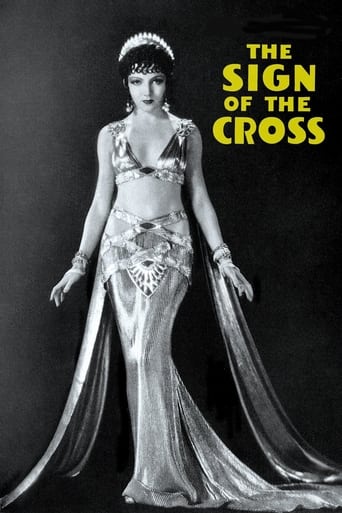
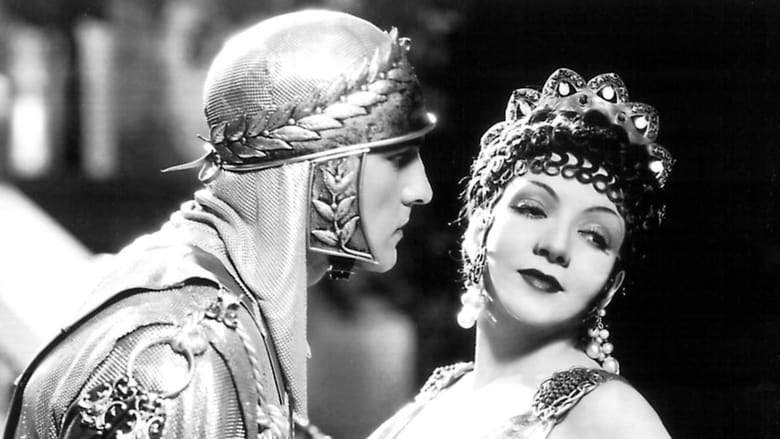
The Sign of the Cross (1932)
After burning Rome, Emperor Nero decides to blame the Christians, and issues the edict that they are all to be caught and sent to the arena. Two old Christians are caught, and about to be hauled off, when Marcus, the highest military official in Rome, comes upon them. When he sees their stepdaughter Mercia, he instantly falls in love with her and frees them. Marcus pursues Mercia, which gets him into trouble with Emperor (for being easy on Christians) and with the Empress, who loves him and is jealous.
Watch Trailer
Cast


Similar titles
Reviews
the audience applauded
Save your money for something good and enjoyable
Better Late Then Never
This is a tender, generous movie that likes its characters and presents them as real people, full of flaws and strengths.
The plot.After burning Rome, Emperor Nero decides to blame the Christians, and issues the edict that they are all to be caught and sent to the arena. Two old Christians are caught, and about to be hauled off, when Marcus, the highest military official in Rome, comes upon them. When he sees their stepdaughter Mercia, he instantly falls in love with her and frees them. Marcus pursues Mercia, which gets him into trouble with Emperor (for being easy on Christians) and with the Empress, who loves him and is jealous.Never was a big fan of Demille and this movie might be why. Acting is over the top and the direction heavy handed.Laughton is especially bizarre. Rubber nose that doesn't match his own skin color so it looks like he has a red nose through out.The romance angle is really poorly done. In fact the writing is really horrible
"The Sign of the Cross" marked Cecil B. DeMille's first epic of the sound era. Produced in the pre-code year of 1932, it gave him license to include some brutal torture and death scenes as well as, some sexy parts too. And yes, this is the film in which Claudette Colbert takes a bath in asses' milk.The story centers around the Roman persecution of the Christians in the time of Emperor Nero (Charles Laughton) in 64 A.D. The film opens with the famous burning of Rome while Nero plays his harp. Nero and his confederate Tigellinus (Ian Keith)conspire to place blame for the blaze upon the Christians whom Rome is trying to exterminate.Marcus Superbus (Frederic March), the Prefect of Rome is close to Nero and the rival of Tigellinus. Poppaea (Colbert) is the scheming sexy wife of Nero whom it seems bends to her will. Poppaea has her eye on Marcus even though he doesn't return the desire.One day while riding through the city Marcus comes upon the virginal Christian girl Mercia (Elissa Landi) and saves her from arrest. Tigellius learns of Marcus' interest in the girl and plots to expose him. Marcus comes to fall in love with the girl. Young Stephan a friend of Mercia, is arrested by Tigellinus' spies and is tortured into revealing the location of a planned Christian gathering.Many of the Christians are slaughtered before Marcus can intercede. The survivors including Mercia are taken away to prison to await execution in the arena. Marcus rescues Mercia and takes her to his house. Mercia tries to convince Marcus to become a Christian but he refuses. The scheming Poppaea whose advances toward Marcus have been rejected, convinces Nero not to spare Mercia from the lions in spite of Marcus' protests.The arena scenes are quite graphic for the time. The gladiator combats, the amazon's duels with the pygmies and finally the slaughter of the Christians are graphically depicted. There is some suggested nudity with one girl being left for a gorilla and another, celebrated fan dancer Sally Rand, being fed to the crocodiles. Also Colbert's bath scene contains teasing little glimpses of her assets.If one has a feeling of deja vu while watching this film. the later epics "Quo Vadis" (1951) and "The Robe" (1953) have similar stories and endings. It's likely that Claudette Colbert's performance in this film resulted in DeMille casting her as Cleopatra in his film of that name in 1934.
This is an interesting movie. The similarities with Quo Vadis are striking and the ultimate provenance of the script may owe something to that other book/movie. I find it interesting to see how two movies made at different times deal with similar material. TSOTC has the piquant tang of Hollywood pre-code, with over-the-top depictions of Roman depravity. QV has a wild-party scene but nothing like that. QV has the technicolor look and feel of Ben Hur and basically conforms to standards of conduct which would not be challenging in America after the Second World War. Robert Taylor and Fredric March play parallel roles of the Roman aristocrat in love with a Christian woman. March was a much better actor than Robert Taylor, who was at times wooden (not exactly Richard Burton in The Robe). Taylor was a great deal older when he played this role and he seems kind of a strange choice for the "love interest" opposite Deborah Kerr. March was young and his performance was not as nuanced as what would evolve in A Star is Born and The Best Years of Our Lives, but he is still extremely good to watch; he never throws away a line. The sadism of the TSOTC colosseum scene beats anything in QV; the most interesting aspect is the expressions on the faces of the crowd. Ustinov versus Laughton as Nero is instructive. U. must have known L's performance and riffed on it; there do seem to be correspondences, but U's performance is more nuanced. TSOC seems to suffer all around from the newness of the talkie medium; the acting seems out of silent films with much wordless gazing, either love- struck or in horror. Elissa Landi's articulate Christian conviction may owe something to the first-generation of mass-media evangelicals (e.g. Amy Semple McPherson) who were making a big splash then. All in all, TSOTC is fine specimen of the toga picture.
This Cecil B DeMille film supposedly shocked 1932 audiences & seemingly shocked some reviewers on this list.Seeing this today,I find it dated beyond belief in every aspect. In fact in many scenes I was chuckling at the antics of the various players.This tale takes place in 64 AD,(burning of Rome & persecution of Christians), It has the same basic story that QUO VADIS has BUT any version of QUO VADIS is far superior than this.I more than likely will see Qup Vadis again (will be about my tenth viewing) & comment then on it.The Sign of the Cross does have an all star cast of the time, Fredric March is our staunch hero, A prefect of Rome, Who has both Epmress Poppea & a Christian lass after him,he does well in the role--he was a fine actor.Claudette Colbert is the evil scheming Empress Poppea, evil to the core. Charles Laughton is Nero,hamming it up ALL the way. Elissa Landi ,is the Christian lass. Miss Landi was no actress & soon disappeared from the screen. She was pretty though.The last 20 minutes takes place in the Colisseum & we have one heck of a show,The special effects department had a field day here. These scenes may have been shocking in the 1930's, BUT today we can see how phony they really are.The entire film was well made,but is not really for todays audiences.Ratings: **1/2 (out of 4) 70 points (out of 100) IMDb 6 (out of 10)






